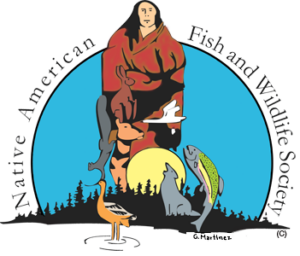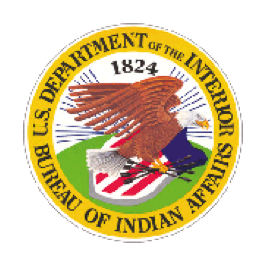Tribal Highlight: Houlton Band of Maliseet Indians Awarded Funds for Wolastoq-St. John Watershed River Restoration Program
Utilizing funding awarded by the America’s Ecosystem Restoration Initiative competitive grant program for ecological restoration and cultural preservation, the Houlton Band of Maliseet Indians is working to restore the Wolastoq-St. John Watershed in hopes of bringing Atlantic salmon home.
 Maine – In 2022, the National Fish and Wildlife Foundation (NFWF) announced the America’s Ecosystem Restoration Initiative (AERI), establishing five years of grant funding to support state, territory, and Tribally-led ecosystem restoration. One of twenty-one Tribes awarded funds in the FY23 funding cycle, the Houlton Band of Maliseet Indians (HBMI), is utilizing AERI funding to develop a strategic, prioritized portfolio of shovel-ready restoration projects to restore the Wolastoq-St. John Watershed.
Maine – In 2022, the National Fish and Wildlife Foundation (NFWF) announced the America’s Ecosystem Restoration Initiative (AERI), establishing five years of grant funding to support state, territory, and Tribally-led ecosystem restoration. One of twenty-one Tribes awarded funds in the FY23 funding cycle, the Houlton Band of Maliseet Indians (HBMI), is utilizing AERI funding to develop a strategic, prioritized portfolio of shovel-ready restoration projects to restore the Wolastoq-St. John Watershed.
In July of 2024, the Native American Fish and Wildlife Society (NAFWS) AERI Field Liaisons, Andy Edwards and Katie Schultz, met with HBMI environmental planner Sharri Venno to see firsthand how the AERI program is supporting Tribal conservation efforts. The three were joined by Bill Sheehan, a project partner who serves as both Regional Director and Tribal Liaison for the northern region of the Maine Department of Environmental Protection – one of nine partnering agencies and organizations joining HBMI in their efforts.
Houlton Band of Maliseet Natural Resources Program
For years, HBMI has been at the forefront of preserving and revitalizing the Wolastoq-St. John watershed, the largest watershed east of the Mississippi River. Their past efforts have notably included enhancements to the Meduxnekeag River on Tribal lands, contributing to the overall health of the broader Wolastoq-St. John watershed.
Through AERI funding they are scaling up their efforts beyond their lands. They are leading a major collaborative initiative to identify and prioritize restoration sites throughout the watershed. Through past work, HBMI has developed strong relationships with NGO, local, state, and federal partners who will all contribute to the project. Much like the watershed, the reach of HBMI’s work extends past the US border into Canada, collaborating with Maliseet and Mi’kmaq First Nations in the provinces of Quebec and New Brunswick.
 HBMI’s commitment to responsible stewardship is well-established. “We want to be an example for landowners in the region on how to support a healthy watershed for the future return of salmon, a HBMI priority species.” explained Sharri.
HBMI’s commitment to responsible stewardship is well-established. “We want to be an example for landowners in the region on how to support a healthy watershed for the future return of salmon, a HBMI priority species.” explained Sharri.
Sharri notes that the river has changed drastically over the last 150 years, due in part to historical logging drives. “They removed a lot of complexity and structure,” she says, “so the river really doesn’t function as it would have before. Flows are faster, it’s shallower, wider, and warmer than it would otherwise be. If all that structure had remained in place, it would be a different river.” Those changes, along with man-made dams have made the river relatively inhospitable and accessible to endangered Atlantic salmon. Native brook trout remain in the system but are more restricted in distribution, finding refuge in less impacted, upper portions of tributaries where some better, cooler habitat remains. The work planned will help improve conditions for both important fish species, not to mention numerous other wildlife and plants that are a part of the local ecosystem and an important part of Maliseet culture.
Bill highlights why HBMI is a great fit to lead this project, “Sharri pushed for tighter regulation and enforcement of standards at the local water treatment plant just upstream from Houlton lands. As a direct result of HBMI’s continued efforts to better regulate the plant, there is a noticeable difference in the river. Before the regulations and enforcement changed as a direct result of Sharri’s efforts, the rocks in this river were completely green with undesirable algae this time of year.”

Sharri Venno, HBMI Environmental Planner, explains barriers to fish passage and other issues within the Wolastoq-St. John Watershed.

This planning phase is essential to the long-term goals of HBMI. There are many sites throughout the watershed that require attention. Given the limitations of other funding sources, agencies have only been able to look at one site at a time. AERI funding allows all the partners to come together and look at multiple sites across the watershed in one effort, rather than the current piece-meal approach. The plan that is developed will serve as a blueprint for HBMI and partners to systematically tackle watershed restoration at a large-scale.
In addition to ecological benefits, the project will also support watershed communities by improving infrastructure resilience, public safety, and economic opportunities. HBMI’s ongoing leadership and strategic partnerships continue to drive meaningful progress in the health and sustainability of the Wolastoq-St. John watershed.

A partially restored site in the Meduxnekeag River that flows through HBMI lands.
Supporting Tribal Conservation
In 2022 and 2023, Tribal Nations requested about $500 million through the America the Beautiful Challenge. NFWF, along with the federal agencies and other partners like Native Americans in Philanthropy have committed to providing at least 10% of annual funds to Tribes. Thus far the quality of Tribal proposals has been rewarded with over a third of funds going to Tribal Nations! In the first two years NFWF has awarded 35 projects to Tribal Nations, totaling about $76 million. While this amount is significant and without a doubt will make an impact across Indian country, the disparity between requested and awarded funding demonstrates the continued need for long-term, sustainable funding for Tribal conservation and restoration.
About Us
 NAFWS is the only national Tribal organization with a specific focus on Tribal fish and wildlife resources. As a unique membership organization with 227 Support Member Tribes in 7 regions, NAFWS strives to meet the needs of its Individual Members and Member Tribes through conferences, trainings, youth education, and by participating with innovative projects and initiatives in Indian Country.
NAFWS is the only national Tribal organization with a specific focus on Tribal fish and wildlife resources. As a unique membership organization with 227 Support Member Tribes in 7 regions, NAFWS strives to meet the needs of its Individual Members and Member Tribes through conferences, trainings, youth education, and by participating with innovative projects and initiatives in Indian Country.
Disclaimer: This project is made possible through a grant from the National Fish and Wildlife Foundation.
Disclaimer: The text of this article has been changed to reflect the new name of the America’s Ecosystem Restoration Initiative. For more information on this change, please contact Megan Hawkins, [email protected].






